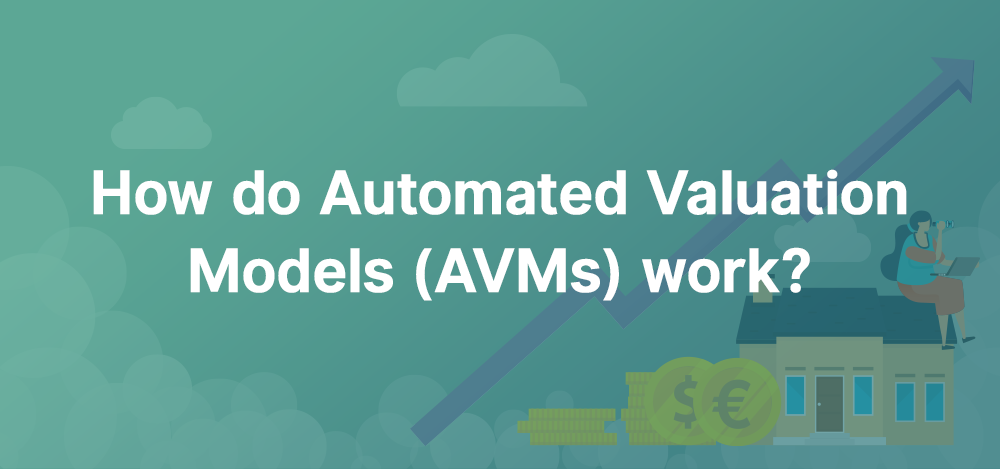By Maya Makarem on 31 May 2022
A friend of mine recently went online to Zillow to find out what her family’s home was worth. It’s been a little over a decade since their Zestimate made it commonplace to get an easy answer to that question. In fact, Zillow was the first consumer-oriented Automated Valuation Model (AVM) using algorithms and massive datasets to estimate the value of residential real estate. Since then, Redfin, Chase, ReMax, RocketHomes and many more have entered the competition.
However, she was frustrated with the experience. Not because Zillow didn’t give her an answer - It certainly did! But then two others gave her different answers, and one of them was wildly off. It prompted me to share with her how these models really work, which made me think that this could be a great learning opportunity for others.
What is an AVM?
AVMs are sophisticated software programs that rely on massive amounts of data to predict a home’s value. You might think that “massive” would refer to a database of all past property sales but that is only the tip of the iceberg. AttomData has a periodic table of data elements that spells out the dozens and dozens of data elements used by modern AVMs. Beyond just sales details and property characteristics, information ranging from zoning, schools, crime, weather, walkability, tax assessor information, permits, listings, legal filings, air quality, etc. are all analyzed for their valuation impact.
How do AVMs work?
Building upon these datasets, there are a variety of ways AVMs generate value estimates for homes. Some look at the 100s of data points (location, size, etc.) for each property and determine how much each characteristic should contribute to a property’s value. Others rely on identifying similar property’s recent sales and adjusting prices up or down based on the differences between the properties. Due to the gaps in data that exist in some parts of the country, many AVMs also provide a “confidence” score to indicate how much a value should be trusted.

In general, companies are very protective of their AVM’s “secret sauce” so it can be difficult to truly know which approach is most effective. Independent testing companies, like AVMetrics, are critical to allowing companies to benchmark their performance.
Uses for AVMs
While AVMs were first used by tax assessors and mortgage companies, they’re now used in a variety of industries. Lending companies use AVMs to estimate equity for refinances, check the quality of appraisals, and value collateral for HELOCs (Home equity line of credit). Mortgage servicers use them to estimate the risk of a loan.
Expanding outside the lending space, AVMs are used by insurance companies to price homeownership policies and on Wall Street as investors value asset portfolios. More recently, AVMs have been used for marketing purposes as an incentive to generate leads for agents.
As AVMs serve a variety of use cases, it’s important to understand different types of AVMs are intentionally designed to generate different values. Lending companies need to understand the current price a home could sell for as that value quantifies their risk in the event of default. Insurers are more focused on reconstruction costs as they have to replace an insured home in the event of a disaster. Lastly, marketers are often incentivized to return higher prices as they want to generate excitement among potential home sellers so they convert into clients.
Benefits and Challenges with AVMs
When looking at the value of an AVM, it’s important to contrast it with its traditional alternative, the home appraisal. In this context, there are clear benefits.
- They’re inexpensive - In 2021, the average appraisal costs $800. Meanwhile, many AVMs can be purchased by simply registering for a valuation with an email.
- They’re faster - The turnaround time for an appraisal averages over two weeks. On the other hand, AVMs can provide valuations instantly as their values are regularly updated to account for changing market conditions.
- They’re accurate - Despite Zillow’s notorious exit from iBuying, Opendoor and Offerpad both posted profitable first quarters in 2022. While iBuyers intentionally operate in more favorable markets, their success proves that AVMs can be used to effectively value properties.
Of course, there are always counterarguments. You won’t have to look further than any agent’s social feed to see how frequently they disagree with a Zestimate. Additionally, an AVM is only as good as the data it relies on. Nationwide datasets are not perfect and feature gaps in coverage, while real estate agents often have location-specific context that’s essential to understanding a home’s true value.
The Bottom Line
Does the rise of AVMs mean the end of agents and appraisers? Not at all! While AVMs will only continue to improve as more data is generated and its quality improves, there will always be gaps and local insights that are best provided by a human specialist. That said, AVMs can be a valuable tool for consumers, agents and appraisers so long as they understand how they work and their limitations.
Curious as to how Restb.ai fits into this? Stay tuned for our next blog post covering the main innovative developments impacting the AVM world. If you have any questions in the meantime, feel free to drop us a message and we can reveal some spoilers about how it all comes together!



comments